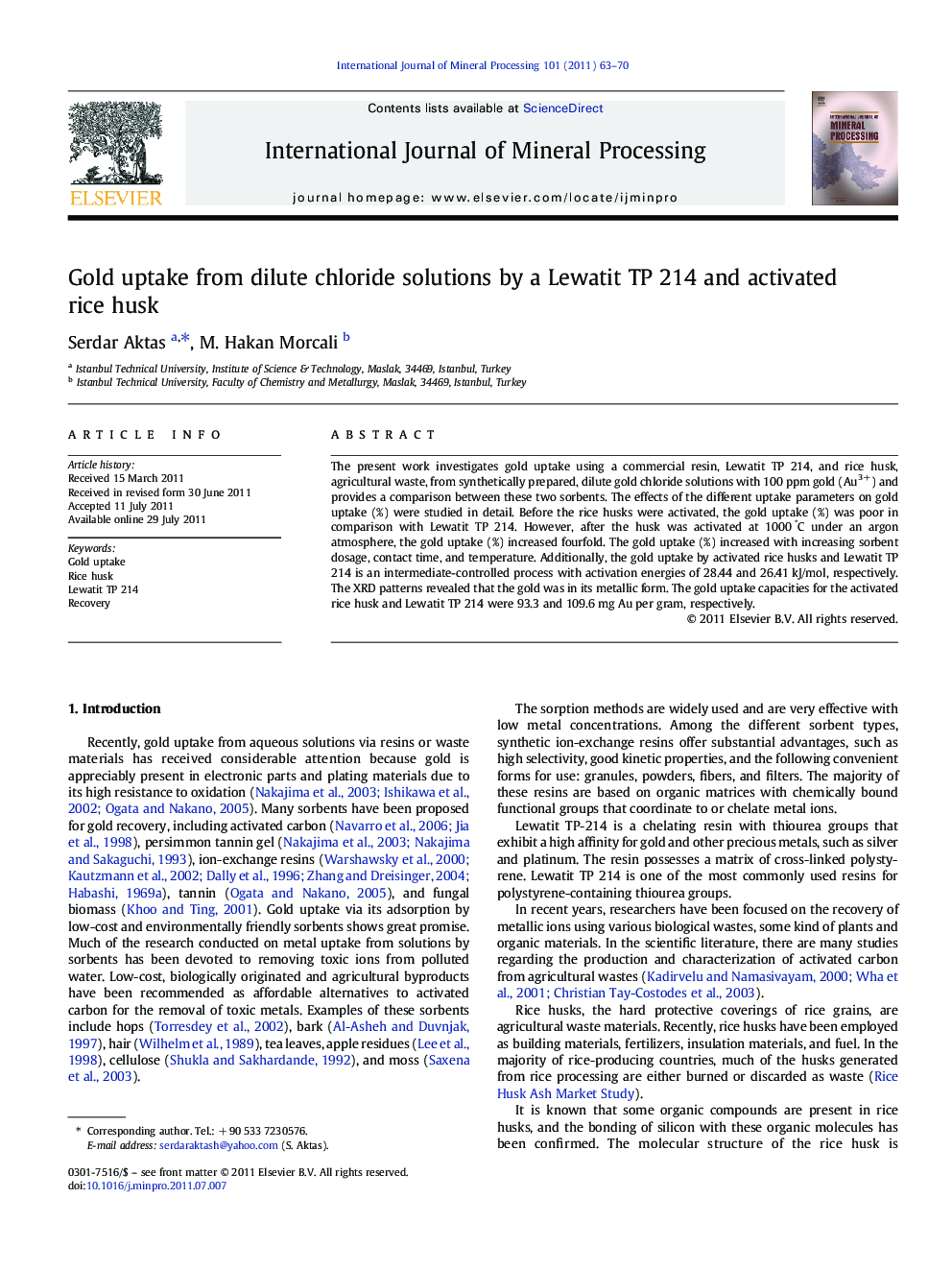| کد مقاله | کد نشریه | سال انتشار | مقاله انگلیسی | نسخه تمام متن |
|---|---|---|---|---|
| 214174 | 1425822 | 2011 | 8 صفحه PDF | دانلود رایگان |

The present work investigates gold uptake using a commercial resin, Lewatit TP 214, and rice husk, agricultural waste, from synthetically prepared, dilute gold chloride solutions with 100 ppm gold (Au3+) and provides a comparison between these two sorbents. The effects of the different uptake parameters on gold uptake (%) were studied in detail. Before the rice husks were activated, the gold uptake (%) was poor in comparison with Lewatit TP 214. However, after the husk was activated at 1000 °C under an argon atmosphere, the gold uptake (%) increased fourfold. The gold uptake (%) increased with increasing sorbent dosage, contact time, and temperature. Additionally, the gold uptake by activated rice husks and Lewatit TP 214 is an intermediate-controlled process with activation energies of 28.44 and 26.41 kJ/mol, respectively. The XRD patterns revealed that the gold was in its metallic form. The gold uptake capacities for the activated rice husk and Lewatit TP 214 were 93.3 and 109.6 mg Au per gram, respectively.
► Without activation, the rice husk was not successful in removing gold from solution.
► The activated rice husk was shown to successfully uptake gold from solution.
► The gold uptake capacity for the activated rice husk and Lewatit TP 214 was 93.3 and 109.6 mg Au per gram, respectively.
► The sorbed gold by two sorbents was in its metallic form.
► The gold purity was determined to be 99.55% and 99.50% for the activated rice husk and Lewatit TP 214, respectively.
Journal: International Journal of Mineral Processing - Volume 101, Issues 1–4, 23 November 2011, Pages 63–70